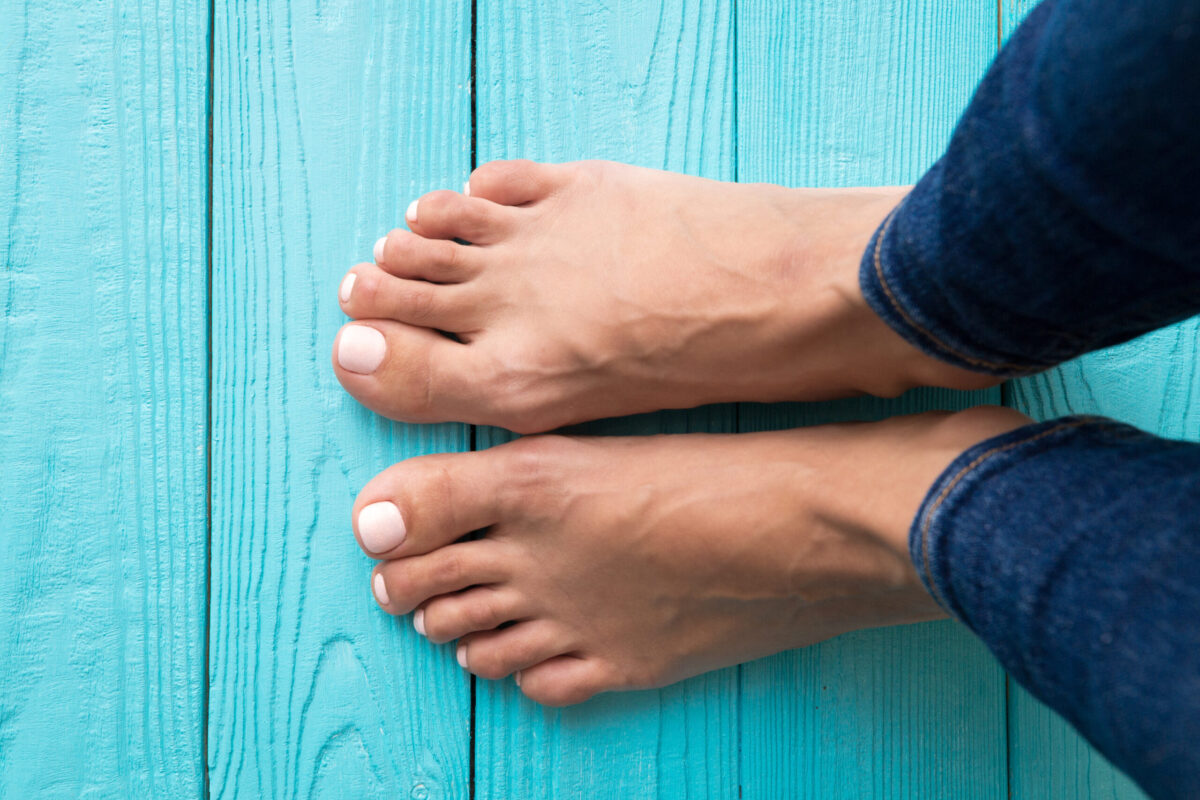Most people don’t think about their feet that much, let alone spend time examining them. Unfortunately, if you ignore your feet you might miss signs of potentially serious medical conditions.
WellTuned spoke with Dr. Gordon Peters, a medical director at BlueCross BlueShield of Tennessee, to learn more about the connections between your feet and certain health conditions.
Foot conditions can indicate health problems
Dr. Peters: Not every twinge, bruise, or sore is a sign of a serious problem. But certain changes in your feet may point to a potential health issue that needs to treatment. When in doubt, get your feet checked out.
Painful swelling of the big toe. If your big toe starts to get swollen and sore, it could be a sign of gout. Gout is a type of arthritis caused by the collection of sharp crystals formed by excess uric acid in your blood. The pain and swelling may come and go.
Cold feet. People joke about cold feet being a sign of anxiety or nerves, but the reality is that it could be more serious. Cold feet on a regular basis can be a sign of neuropathy, or decreased circulation of blood to your feet. One common cause of neuropathy is atherosclerosis, or thickening of the arteries. Cold feet may also be a sign of nerve damage.
Numbness. People who have experienced nerve damage may develop numbness in their feet. This is particularly a problem for people with diabetes. Pinched nerves, a slipped disc, and peripheral artery disease can also cause numbness or tingling in the feet. And numbness may make it harder to walk and notice sores, blisters or cuts that could become infected.
Burning pain. It might be hard to ignore this symptom, which may also be accompanied by swelling. It could be a sign of injury or peripheral vascular disease.
Changes to your toenails. If you stub your toe and your toenail turns vivid colors as a result, it’s probably not that big a deal. But if you notice other changes to your toenails without a ready cause, pay attention. It could be a fungal infection, which can usually be treated easily. Or you may be developing nail psoriasis, which can affect both fingernails and toenails. Signs of nail psoriasis include:
- dents or pits in the nail
- crumbling nails
- white, yellow or brown discoloration
- blood under your nail
- separation of the nail from the skin
These changes may also be a sign of psoriatic arthritis.
Sore that won’t heal. If you notice a sore or ulcer that’s slow to heal—or won’t heal at all—it could be the result of poor circulation. This can occur with a number of health conditions, including diabetes. Unfortunately, they can get infected, which, in a worse-case scenario, could lead to amputation. A lingering sore or ulcer could also be a developing skin cancer.
Swelling. Swelling in your lower legs and feet could be a sign of an infection or blood clot in the leg or foot. Also known as edema, this collection of fluid in your legs and feet could also be a sign of heart, liver or kidney failure. Varicose veins can sometimes cause swelling in the feet, too.
If you experience these symptoms, especially on an ongoing basis, let your doctor know.
How to keep your feet healthy
Dr. Peters: If you have healthy feet and no major health conditions that you’re aware of, you still need to pay some attention to your feet. The Centers for Disease Control and Prevention (CDC) recommend the following steps for good foot hygiene:
- Wash your feet every day—and dry them completely afterward
- Keep your toenails clean and clipped short
- Change your socks at least once every day
- Examine your feet regularly for sores, cuts, infected toenails, calluses, etc.
- When choosing a salon for pedicures, make sure it is licensed by the state cosmetology board
If you have diabetes or another health condition that causes numbness in your feet, your doctor may also suggest other strategies. This is because complications may develop before you realize it. For example, people with diabetes should get an annual comprehensive foot exam. Your doctor may also recommend specific socks and shoes to minimize the likelihood of blisters and ulcers that could become infected.
“You start with two feet, and if you don’t care for them, you can’t get any more,” says Dr. Peters. “So, take the time to take care of your feet and address any problems before they get serious.”
Dr. Peters explains how swallowing works on WellTuned.
Get more information about specific health terms, topics and conditions to better manage your health on bcbst.com. BlueCross BlueShield of Tennessee members can access wellness-related discounts on fitness products, gym memberships, healthy eating and more through Blue365®. BCBST members can also find tools and resources to help improve health and well-being by logging into BlueAccess and going to the Managing Your Health tab.





